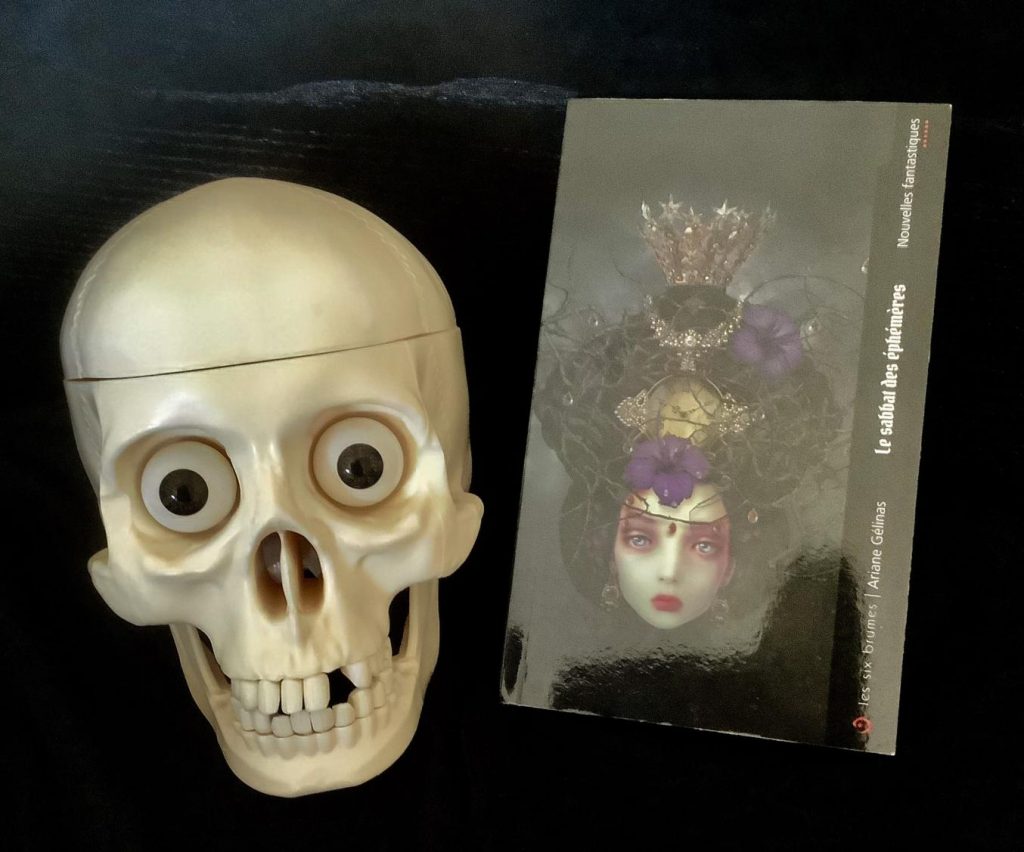The Once and Future Witches

By Catherine Hall
Witches, suffragists, folklore, secret societies—a magical alternate America. Alix E. Harrow weaves all these elements together in her spellbinding novel, The Once and Future Witches. Once upon a time, witches are real, and they were powerful once, but now witching is illegal.
Three sisters, James Juniper, Agnes Amaranth, and Beatrice Belladonna have lived separate lives for the last seven years until they all find themselves in St-George’s Square in New Salem. I fell in love with these complex and sympathetic characters. They each have unique goals and motivations, but through quirks and a mutual love of fairy tales, their sisterly bond emerges in compelling and subtle ways. 19th-century societal norms and gender stereotypes bar them from their dreams—unless they overcome their enmities with each other and come to terms with what they are: witches.
The book is made up of two plots. One explores the suffragist movement of the late 19th century and even focuses on those who were excluded from fundamentally classist and racist organizations. After being kicked out of the New Salem’s Women’s Association, Juniper unites with her sisters to form a new association, The Sisters of Avalon, open to all women. The other plot concerns the ancient witch legends on which the sisters grew up, so that the novel effectively becomes a witch story about witch tales. When Juniper, Agnes, and Bella discover that witches could still exist, they must all work together to find the Tower of Avalon, discover what is inside, and reclaim their lost powers.
Tales of witches are no rare thing. Still, Harrow’s novel stands out because of the characters and its intriguing interwoven plots. For me, it is the prose that is especially magical. Every one of her sentences seems to melt into the next, as though she, too, is a witch, creating a potion of words. And indeed, after finishing this novel, you will feel like she has cast a spell on you.

Le sabbat des éphémères
Par Magdalena Nitchi
Le sabbat des éphémères est un recueil de nouvelles d’Ariane Gélinas, publié dans la Collection Les Six Brumes — la collection principale d’un des plus importants éditeurs de littérature imaginaire au Québec. Puisque j’avais lu et adoré les Cendres de Sedna de la même auteure, j’ai pensé lire ce livre afin d’honorer l’esprit d’Halloween.
La collection est exactement ce que promet le titre : un royaume d’ombre où se mêlent la fantaisie à la réalité, et l’horreur au surnaturel. Qu’importe le lieu, chaque histoire semble si réelle. D’une ville fantôme québécoise inondée à un château/laboratoire gothique où errent de mystérieuses créatures-poissons, Gélinas construit des mondes où il est facile de s’y perdre. Chaque histoire a une atmosphère puissante et envoûtante, dotée d’un paysage qui prend vie pour engloutir le protagoniste – ainsi que le lecteur – en entier.
L’un de mes récits préférés est « L’autre côté du labyrinthe, » ce dernier étant, aussi, la première nouvelle de la collection. Dans cette histoire fantastique et à l’allure vertigineuse, une mathématicienne monte à bord d’un taxi, demandant au chauffeur de l’emmener tard, la nuit, dans les rues de Montréal, à la recherche de l’entrée d’un mystérieux labyrinthe. Quiconque ayant vécu dans la métropole connaît l’expérience d’errer dans ses ruelles abondantes ou de chercher un endroit dont vous savez l’emplacement, mais que vous ne parvenez plus à retrouver. Le mystère entourant ce récit, auquel s’ajoute sa fin ambiguë, lui confère une merveilleuse atmosphère à la fois intrigante et effrayante. Je meurs d’envie d’en savoir plus, mais je redoute aussi des réponses qu’obtiendrait la mathématicienne.
Courtes, fascinantes, mais surtout extrêmement bien écrites, les histoires de Gélinas sauront certainement piquer votre intérêt. Au moyen de sa plume raffinée, chaque nouvelle de l’auteure contient juste assez de détails pour rendre le récit percutant, sans pour autant saturer le texte d’éléments superflus. Si vous cherchez une lecture pour vous donner des frissons en octobre, quoi de mieux que de vous procurer un exemplaire de ce livre!
The Route of Ice and Salt by José Luis Zárate
By Olivia Shan

With the release of the newly translated cult novella The Route of Ice and Salt, celebrated Mexican SF/F author José Luis Zárate finally makes his English-language debut. In 1897, The Demeter is set to ship out a seemingly innocent cargo of Transylvanian soil from Varna to Whitby. Narrated through the diaries and confessions of the schooner’s troubled captain, the book invites readers into a maelstrom of nightmares, homoeroticism, and strange body horror as an ominous entity lurking onboard the ship leads its crew to an inevitably fateful end.
The loose framing story—that of The Demeter voyaging to England—is a reimagined plot point from Bram Stoker’s Dracula. It isn’t necessary to be familiar with Dracula to enjoy Zárate’s book, although the prose takes on an appropriately Gothic quality. The writing’s excessive introspectiveness may frustrate some readers. However, with the book’s quick and steady pacing, most will acclimate to the book’s quirks and begin appreciating how the rambling, stream-of-consciousness only heightens the narrator’s claustrophobic state of mind.
Translator David Bowles does a stellar job; Zárate’s authorial voice feels remarkably distinctive, even in translation. I scarcely found any passages that felt stilted or awkward. The text could easily pass as a native English written text; a rare feat among translated works. It’s very heartening to see that publishers—especially small presses such as Innsmouth Free Press—are taking more risks in terms of deciding what to publish.
Although Zárate’s cult novella was originally released more than two decades ago, its explorations of fear and repression feel startlingly relevant in our current day, and it provides a fascinating glimpse into a niche sub-category of the Latin-American literary scene. If you like vampiric horror, you should consider picking up a copy of The Route of Ice and Salt. I can only wholeheartedly hope that other English-language translations of Zárate’s works will materialize in the coming years.
